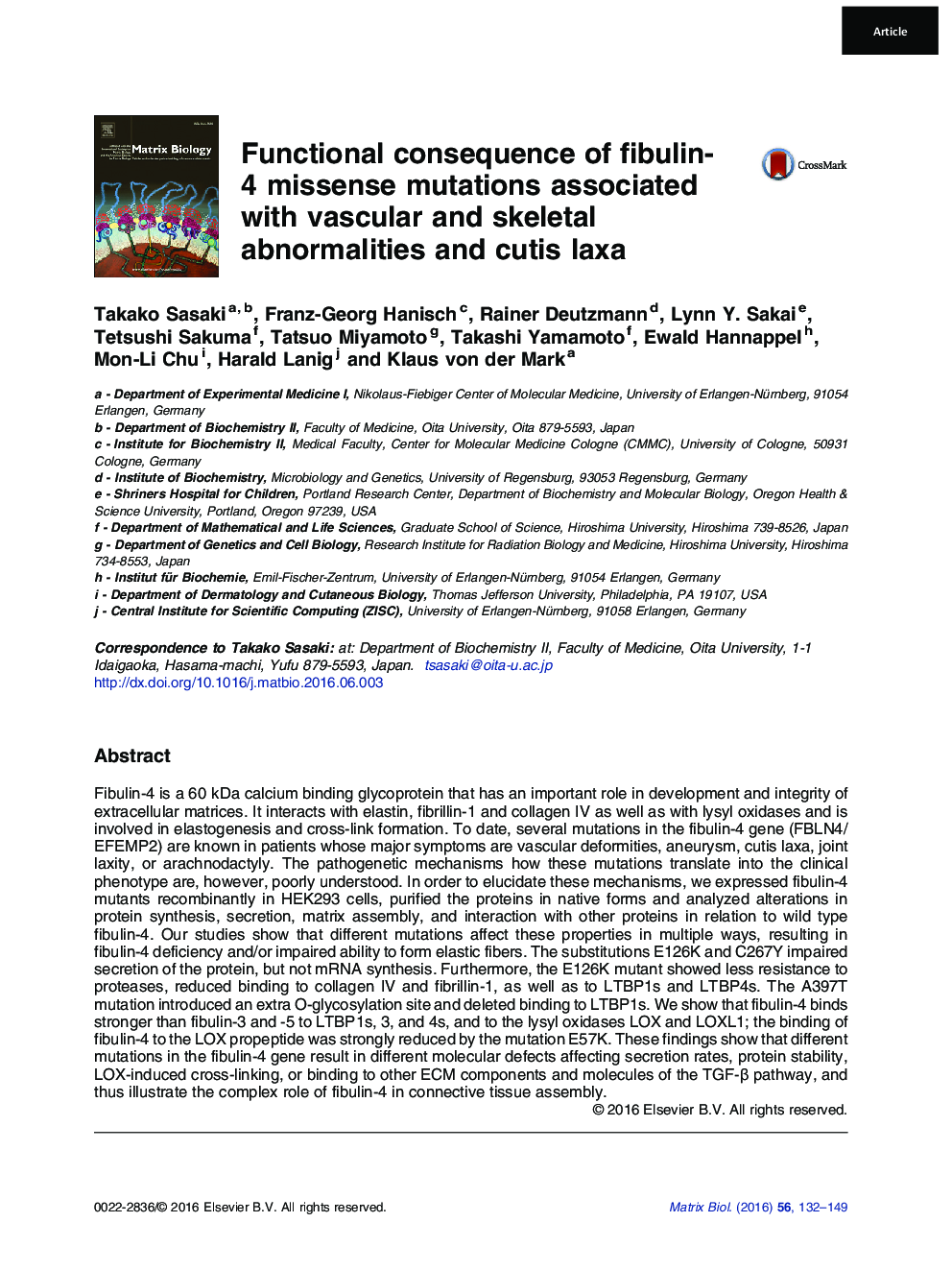| کد مقاله | کد نشریه | سال انتشار | مقاله انگلیسی | نسخه تمام متن |
|---|---|---|---|---|
| 5528553 | 1548004 | 2016 | 18 صفحه PDF | دانلود رایگان |
- The consequence of fibulin-4 mutations were analyzed at molecular level
- Each missense mutation affects fibulin-4 functions at different extent
- This study may contribute to our understanding of the pathways involved in the genotype-phenotype relation of the fibulin-4 mutations
Fibulin-4 is a 60 kDa calcium binding glycoprotein that has an important role in development and integrity of extracellular matrices. It interacts with elastin, fibrillin-1 and collagen IV as well as with lysyl oxidases and is involved in elastogenesis and cross-link formation. To date, several mutations in the fibulin-4 gene (FBLN4/EFEMP2) are known in patients whose major symptoms are vascular deformities, aneurysm, cutis laxa, joint laxity, or arachnodactyly. The pathogenetic mechanisms how these mutations translate into the clinical phenotype are, however, poorly understood. In order to elucidate these mechanisms, we expressed fibulin-4 mutants recombinantly in HEK293 cells, purified the proteins in native forms and analyzed alterations in protein synthesis, secretion, matrix assembly, and interaction with other proteins in relation to wild type fibulin-4. Our studies show that different mutations affect these properties in multiple ways, resulting in fibulin-4 deficiency and/or impaired ability to form elastic fibers. The substitutions E126K and C267Y impaired secretion of the protein, but not mRNA synthesis. Furthermore, the E126K mutant showed less resistance to proteases, reduced binding to collagen IV and fibrillin-1, as well as to LTBP1s and LTBP4s. The A397T mutation introduced an extra O-glycosylation site and deleted binding to LTBP1s. We show that fibulin-4 binds stronger than fibulin-3 and -5 to LTBP1s, 3, and 4s, and to the lysyl oxidases LOX and LOXL1; the binding of fibulin-4 to the LOX propeptide was strongly reduced by the mutation E57K. These findings show that different mutations in the fibulin-4 gene result in different molecular defects affecting secretion rates, protein stability, LOX-induced cross-linking, or binding to other ECM components and molecules of the TGF-β pathway, and thus illustrate the complex role of fibulin-4 in connective tissue assembly.
Journal: Matrix Biology - Volume 56, December 2016, Pages 132-149
